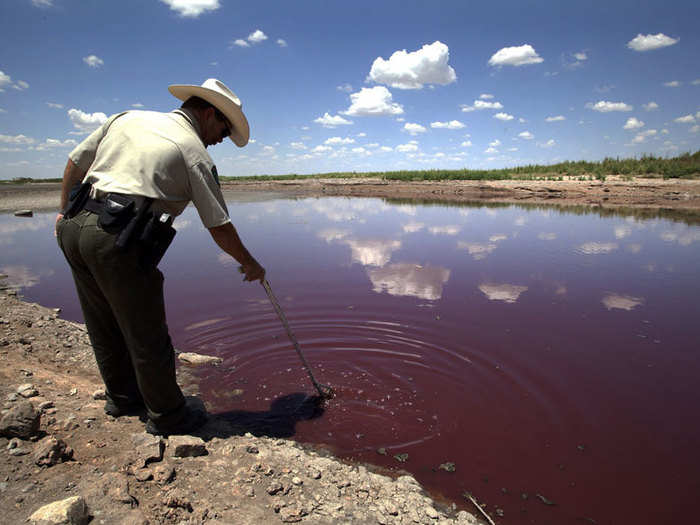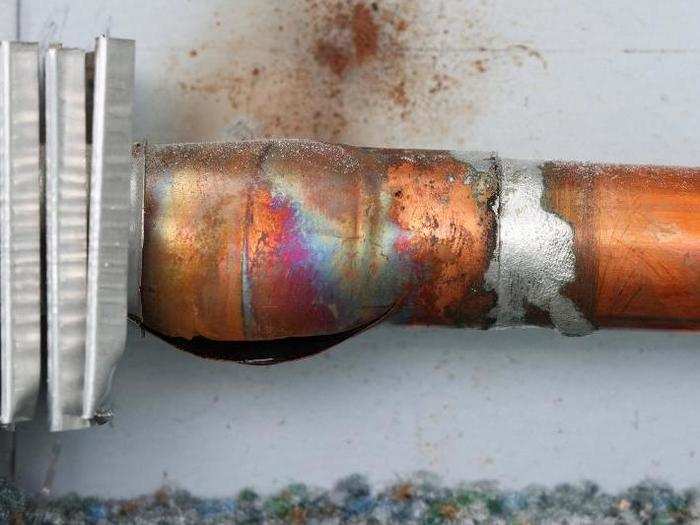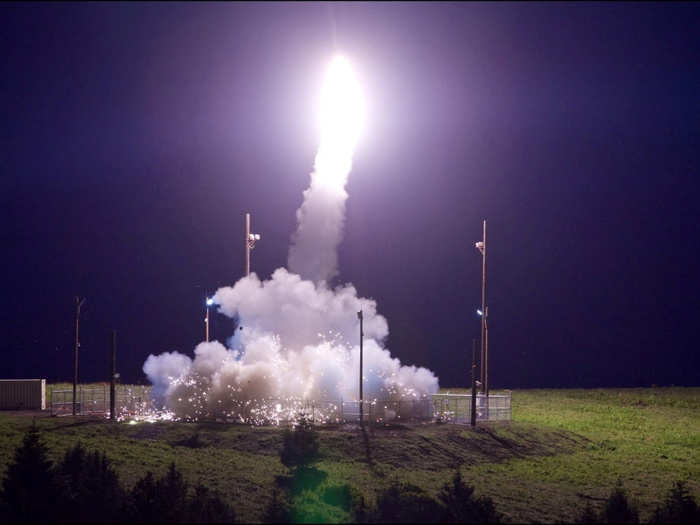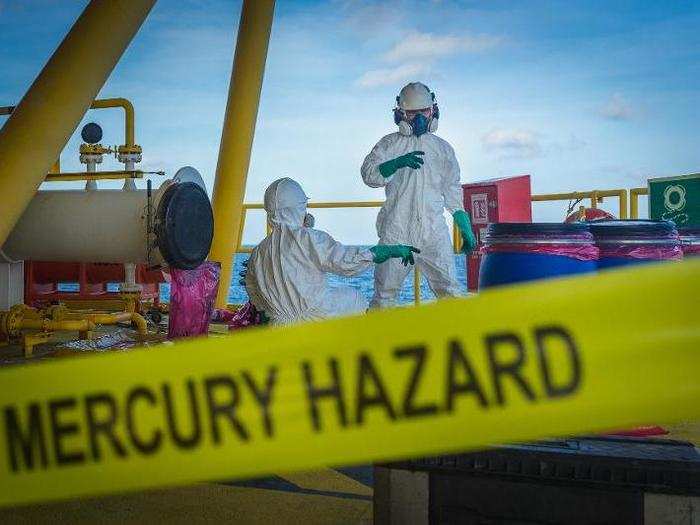- Home
- slideshows
- miscellaneous
- 9 terrifying things that could be lurking in your tap water
9 terrifying things that could be lurking in your tap water
Lead poisoning was at the heart of the Flint crisis, but it's also a problem in places like Detroit, Pittsburgh, and Washington, DC.

Arsenic has seeped into the water supply in California, Arizona, and New Mexico.

Arsenic is a common contaminant since it's found naturally in the earth's crust. Reuters reports that southwestern cities like Los Angeles, Albuquerque, Scottsdale, and Tucson get their drinking water from sources containing arsenic levels that exceed what's allowed by the EPA.
In California's Central Valley, excessive groundwater pumping has also leached toxic levels of arsenic into local water supplies. A 2018 Nature study found that around 10% of wells tested in the San Joaquin Valley — the Central Valley's main agricultural hotspot — have shown dangerous levels of arsenic over the last ten years.
Exposure to arsenic can increase one's risk of cancer, heart disease, and diabetes. Like lead, the chemical has also been linked to brain development issues in children.
Radioactive substances can leech into groundwater, which has become a huge problem in Texas.

Radioactive substances don't just come from nuclear power plants. Some of these materials, such as radium, uranium, thorium, and radon, are found in nature. Practices such as coal mining, construction, and oil and gas production can aggravate these naturally-occurring isotopes, causing them to seep into groundwater.
This is especially the case in Texas, where high amounts of radium have contributed to the most widespread water violations in the US.
Exposure to radium is linked to bone cancer, while other radioactive materials can produce cancers of the lungs, skin, liver, kidneys, stomach, and thyroid.
Elevated levels of copper have been found in Detroit public schools.

As pipes and faucets age, they can release copper into drinking water, generating enough exposure to threaten our health. One tell-tale sign of elevated levels of copper are pipes that have turned a blue-green color.
Though copper isn't bad for you in small doses, high levels of exposure can produce health problems such as anemia and liver and kidney damage.
In September 2018, at least 57 out of 86 Detroit public schools tested positive for elevated levels of copper or lead.
Chlorine in drinking water may not sound terrifying, but it can expose people to a parasite that causes diarrhea, cramps, and nausea.

Chlorine is deliberately added to the US water supply to kill germs and pathogens, but when it mixes with other organic compounds it can create a few harmful byproducts.
One of these byproducts, a group of chemicals known as trihalomethanes (THMs), has been linked to kidney problems and increased cancer risk. Another, known as haloacetic acids (HAAs), causes skin irritation and could also increase cancer risk.
Low levels of chlorine in the water system can also expose people to a parasite called giardia that causes diarrhea, cramps, and nausea.
Clean-water advocate Erin Brockovich identified PFOA as the chemical that concerns her most.

When Business Insider asked famed clean-water advocate Erin Brockovich about her biggest concern for today's drinking water, she pointed to one chemical: perfluorooctanoic acid (PFOA). The man-made substance is commonly known as the "nonstick" element in Teflon that prevents your food from clinging to the pan.
Places located near chemical plants that use PFOA may see elevated levels of the chemical in their water supply. While scientists are still learning about the link between PFOA and disease, the chemical has been associated with kidney and testicular cancer, high cholesterol, early menopause, colon ulcers, and other adverse health effects.
Perchlorate is used to make fireworks and missiles — but it could also wind up in drinking water.

California and Massachusetts have enforced strict limits on perchlorate — a chemical used to make rocket fuel, missiles, and fireworks — in drinking water. But that doesn't stop residents of other states from being exposed.
The EPA has identified 45 states that have perchlorate in drinking water, which puts an estimated 16 million Americans at risk of consuming the chemical. The chemical poses the greatest danger to children and pregnant women, since it's been linked to brain development issues.
Consuming nitrate through drinking water can cause "blue baby disease."

Nitrate, like arsenic, is a groundwater contaminant. The chemical usually makes its way into our water supply through fertilizers or septic systems.
Though it's typically not a problem for adults, water contaminated with nitrate can be dangerous for infants, who consume more water relative to their body weight.
Even short-term exposure to the chemical can lead reduce the amount of oxygen in an infant's blood, leading to methemoglobinemia, or "blue baby disease." The disease's symptoms include digestive and respiratory problems, brain damage, and even death.
Mercury from industrial waste sites can pollute well water.

Mercury can seep into well water through multiple sources, including industrial waste sites and discarded household products such as paint. Short-term exposure to high doses of the chemical can damage the nervous system and kidneys, and impede the development of unborn children.
But there's a bit of good news: The EPA has been regulating mercury in drinking water for nearly three decades, so there's only a slim chance you'll actually be exposed.
When it comes to regulating tap water across the nation, however, the organization has said they "may not know" whether your water is safe to drink.
Popular Right Now
Popular Keywords
Advertisement